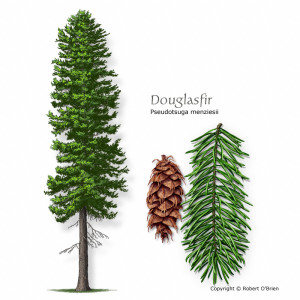My childhood pediatrician, Dr. S., was a colleague of my father’s, a close family friend, and a man who loved Christmas. In fact, he loved Christmas so much that he lived it year round, through his hobby of crafting lavish tree ornaments. When I knew him, he had long since made enough to cover his family tree, a dazzling, flocked masterpiece that glittered through the holiday season. But he was also an exceptionally generous man, and every year he gave some of his creations away to friends and family. I still have a few of them and they always have pride of place on my Christmas tree.
It has been a long time since Dr. S. gave those ornaments to my parents, but the tissue that wraps them during the off season still harbors a few evergreen needles from trees past. Each year when I open the ornament box, I stop for a minute and smell all the Christmases of my life.
Dr. S. was picky about his Christmas trees. They had to be beautifully shaped and, perhaps equally important, sport branches sturdy enough to stand up to flocking and a bumper crop of ornaments. He chose only one variety—Douglas fir—and he always bought it from the same tree lot. When I was young he generally bought a second one and gave it to us as a Christmas present.
Douglas fir has a long botanical name: Pseudotsuga menziesii. Plant taxonomists, as is their inclination, have been arguing over the botanical name for well over a century, but everyone agrees that the trees are magnificent. Native to far western North America, they are sometimes also known as “Oregon pine” or “Columbian pine”. Despite the “pine” and “fir” common names, the Douglas trees are more closely related to the hemlock or Tsuga genus, which, in turn, is part of the larger Pinus or pine family.
Douglas firs had been thriving in their native western range for centuries before a travelling Scottish botanist, Archibald Menzies, first described them in 1791. Another Scotsman, the celebrated, but short-lived botanist, plant explorer and mountaineer, David Douglas, collected seeds from the trees and was responsible for introducing them to England and the Old World in 1827. Douglas was a prolific plant explorer, eventually introducing about 240 new plants, including one of my favorite garden flowers, the California poppy. Douglas lives on in the popular evergreen, but his name is also attached to the Latin species names of over 80 plants and animals.
Douglas introduced his namesake fir about ten years before the young Queen Victoria ascended the throne of England in 1837. Three years after that, Victoria married her cousin, Prince Albert of Saxe-Coburg and Gotha, who brought the German tradition of decorated evergreen Christmas trees to England. The idea caught on and in the years between then and now, people have decorated all kinds of trees—pines, spruce and fir—for Christmas.
In my mind, the Douglas fir of my childhood is still the most beautiful.
Commercial Christmas trees labeled “Douglas fir” are generally Pseudotsuga menziesii ‘Glauca’, a variety of the Rocky Mountain Douglas fir, that can grow up to 130-feet in its natural habitat, but stays smaller in landscape situations, and considerably smaller when grown for Christmas tree production. The short needles are lustrous blue-green and the branches are slightly upturned, making them perfect for supporting all kinds of ornaments, lights, garlands and other holiday decorations. The branches also exude a pleasant camphor-like scent. Fastidious housekeepers and those who put up trees the day after Thanksgiving can also appreciate the fact that Douglas firs are much better at needle retention than competing Christmas tree varieties.
Because of those sterling qualities, Douglas trees tend to be a bit more expensive. For that reason and because personal tastes and family traditions differ in Christmas tree choice and all other things, some people would never buy a Douglas fir. This leaves more for the rest of us. The most important thing to remember is that every Christmas tree looks beautiful on Christmas morning.
Over time, Douglas firs have been used for much more than just Christmas tree production. The hard durable lumber has been popular for structural use and the needles have, according to some reports been used as a flavor additive for eau de vie liqueurs. If you have the room, Douglas fir also makes an excellent landscape subject—a living Christmas tree for your north forty.
Of course the true value of any Christmas tree is not in its species or variety, but in the personal associations each of us hangs on its branches when we rediscover the winter holidays every year. My Douglas firs have always done an excellent job of showcasing mine.
